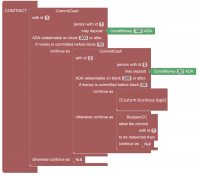Since the last update two months ago, the Cardano team has been growing and keeping busy. With so many of the team being academics, it is not surprising that various team members have continued to release a string of research papers on a variety of topics. All of this theory is supposed to serve as a blueprint for what the team hopes will be the most advanced and robust blockchain network the world has ever seen.
At the same time, the technical progress marches on, with a major focus on both growing the developer ecosystem and optimizing the performance of the Daedalus wallet in anticipation of the release of version 1.4. Here’s a look at some of the highlights from the recent status update.
Reward Sharing Schemes for Staking Pools
One of the major concerns among Proof-of-Stake critics is that it could lead to centralization in the long term. In Cardano’s last update, the team announced they were nearly finished with a research paper aimed at establishing a solid foundation for a sustainable staking structure which could address some of these concerns.
That paper has now been released, and includes projections of the long-term impact of the rewards structure of Ouroboros, Cardano’s consensus method. This long view is important both for the stability of the network and to address criticism.
While Ouroboros defines the consensus protocol, the new paper is meant mainly to address the dynamics of the staking pools, including defense against Sybil attacks, where a malicious actor tries to game the system by creating numerous fake accounts. The question arises, however, that if Ouroboros was already provably secure, how is it that the staking pools represent another potential attack vector that needs to be addressed?
Release of Paper Describing Marlowe Smart Contract Tool
Cardano consistently seems to be focused on taking Ethereum’s recipe for success and improving on it. Part of the success of Solidity, the Ethereum smart contract language, was its readability and accessibility.
Now Cardano’s team is releasing Marlowe, a tool for designing smart contracts with a drag-and-drop browser interface. This will make it possible for non-programmers to formulate and customize secure smart contracts, increasing the ease of smart contract deployment.

Optimized Block Storage
The storage mechanism of Cardano has now been restructured to take up less space, which will lower the hardware requirements to run a Cardano node.
Cardano’s staking system is organized into epochs. At the beginning of an epoch, a snapshot is taken of all stakeholders, and then the actual formation of blocks is handled by randomly selected groups of stakeholders. With the new organization system, each epoch will be contained in a single file, rather than each block.
This is quite a difference, since Cardano’s block time is currently 20 seconds. This will reduce the number of files produced in a year from 1.5 million to around 200. After the recent update, some users experienced up to a 75% improvement in the speed of downloading the entire Cardano blockchain.
Daedalus Wallet Now Available for Linux
The team has completed and released a version of the Daedalus wallet for Linux, which means a full wallet can now be run on all major platforms. The wallet is available here, but is has to be manually compiled as the team is still working on the installer.
Light Wallet Under Review
For users who don’t require all of the features of Daedalus but still want to transact in ADA, the team is nearly finished with the “Yoroi” desktop client wallet. This wallet will be available as a Chrome extension similar to Metamask, and should open up a lot of potential applications for ADA. Some features are already available, with more to come, and the current version of the wallet can be downloaded here.
Rust Library for Cardano
A decentralized ecosystem is only as good as the developers that populate it. Cardano is hoping to expand the reach of the Cardano network by improving accessibility for third-party developers. A step in this direction is the recent release of an open-source library based on the Rust programming language. This is intended in particular to help with the development of mobile applications of Cardano.
Plutus Core
Plutus is intended to be Cardano’s answer to Ethereum’s Solidity, a simplified and easy to read Haskell-based programming language used for smart contracts. One of the team members released a paper defining a framework for the internal logic of smart contracts. It is hoped that clearly defining smart contract logic can help to avoid issues like the Parity bug, which froze and rendered over 500,000 ETH unspendable.
Bittrex Introduces ADA-USD Trading Pair
The US-based exchange Bittrex has now enabled direct trading between USD and ADA, a distinction usually reserved for the most established cryptocurrencies.
Final Thoughts
If Ethereum is far and away the best platform in terms of developer community, Cardano certainly takes the prize for theory. This is reflective of the academic background of the team, so it will be interesting to see how Cardano does against projects like Vechain, NEO, and Icon, whose teams are used to operating in the cutthroat world of business.
Cardano’s plan is ambitious and elaborate, but they are sticking to it. If Cardano becomes the world’s first trillion-dollar blockchain platform as Charles Hoskinson hopes, then it makes sense to put as much work into the foundation as the team is doing.

